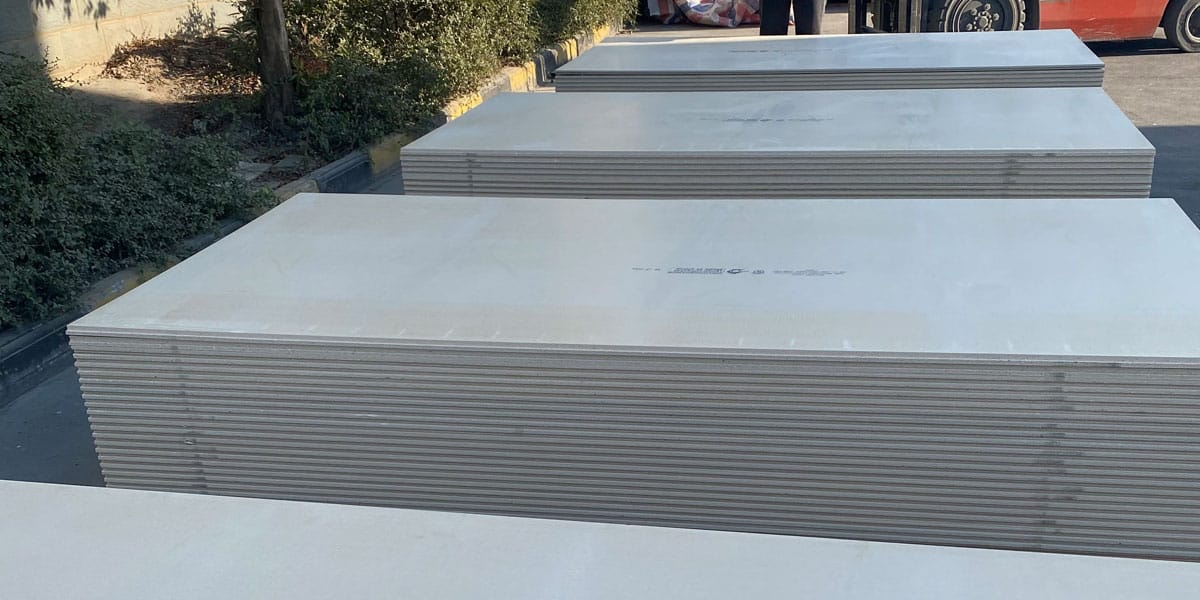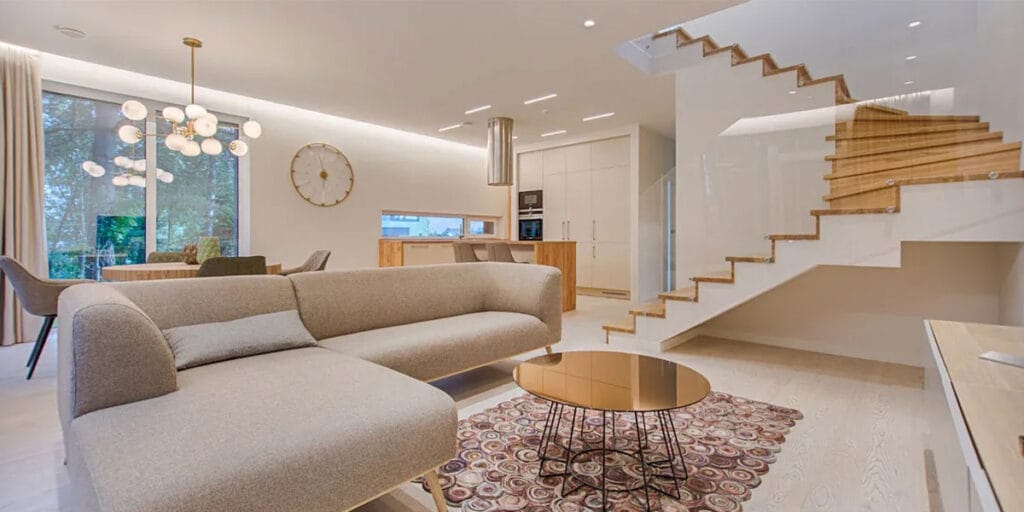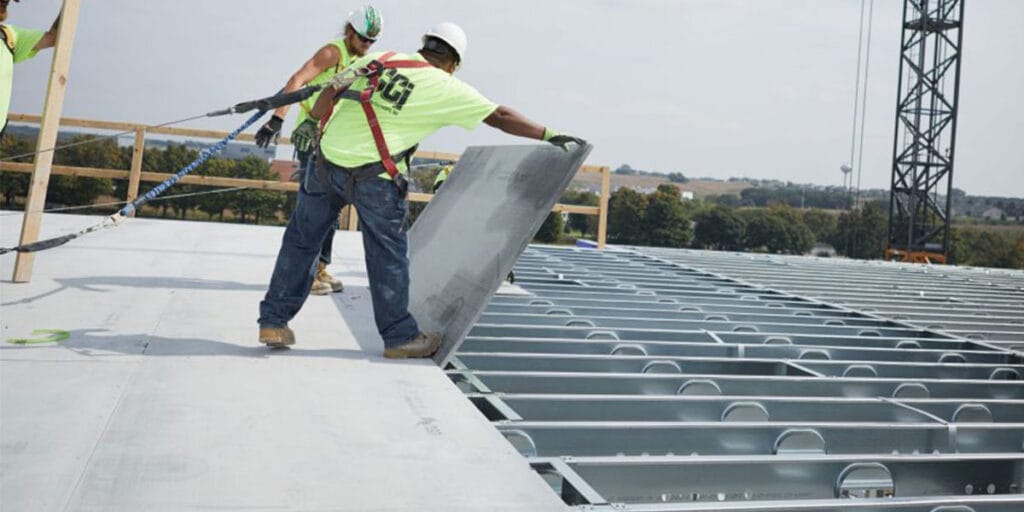
09 Jun Magnesium Sulfate Boards vs Magnesium Oxide Boards for Construction
Table of Contents
When building something, you might see magnesium sulfate and chloride free MGO boards. These boards look alike but are different in makeup, use, and strength. Magnesium sulfate boards resist water and have no chloride. Chloride free MGO boards are strong and resist fire. Knowing these differences helps you pick the best one for your job. For example, chloride-free boards stop rust in wet places, making them great for certain uses.
Picking the right board makes buildings last longer and stay safe. Choosing the wrong one can cause big repairs or problems. Learning how each works in different situations helps you decide wisely.
Key Takeaways
Magnesium sulfate boards work well in wet places. They resist water and mold, so they are great for bathrooms and basements.
Magnesium oxide boards are light and fire-resistant. They are good for general building, like walls and low-cost homes.
Picking the right board can save money over time. Magnesium sulfate boards cost more at first but need less care in damp areas.
Both boards are eco-friendly, but magnesium sulfate boards are greener. They don’t have chloride, which can hurt soil and water.
Knowing what each board can do helps you choose wisely. Think about your project’s needs to pick the best one.
Overview of Magnesium Sulfate Boards
Composition of Magnesium Sulfate Boards
Magnesium sulfate boards are made from magnesium, sulfur, and oxygen. These materials create a strong and eco-friendly building product. The mix contains 20.19% magnesium, 26.64% sulfur, and 53.17% oxygen. This exact formula keeps the boards strong in different conditions.
These boards are designed with advanced technology. For instance, they have a thermal conductivity of 0.186 W/m·K. They can bend up to 22 MPa strength even when wet. They also pass water tests, making them great for damp areas. Below is a table showing key details:
Specification | Standard/Method | Value |
|---|---|---|
Thermal Conductivity (U Value) | EN12667:2001 | 0.186 (W/m·K) |
Reaction to Fire | EN13501-1 | A1 Non-combustible |
Density Dry (Ex-Works) | EN12467:2012 +A1:2016 section 7.3.1 | 950-1200kg/m³ |
Bending Strength | EN12467:2012 +A1:2016 section 7.3.2 | Ambient 20Mpa, Wet 22Mpa |
Water Impermeability | EN12467:2012+A1:2016 section 7.3.3 | Passed |
Properties of Magnesium Sulfate Boards
Magnesium sulfate boards resist fire and water very well. Their surface doesn’t let water in, so they stay stable. This makes them perfect for wet places like bathrooms or basements. Unlike drywall, they don’t swell or lose shape over time.
Research on Basic Magnesium Sulfate Cement (BMSC) shows it forms a strong whisker phase. This phase boosts strength, making these boards great for tall buildings and tough projects.
These boards also stop mold and mildew because they are inorganic. This makes them a good choice for humid areas.
Advantages of Magnesium Sulfate Boards
Magnesium sulfate boards are not just strong but also eco-friendly. They lower carbon emissions by 22% compared to Portland cement. This makes them better for the environment.
They are perfect for wet areas because they don’t soak up water. This stops mold and keeps them lasting longer. Their fire resistance also makes them safer for buildings in fire-prone areas.
These boards are light, so they are easy to carry and install. This saves time and money during construction. With all these benefits, magnesium sulfate boards are a smart choice for modern building projects.
Applications of Magnesium Sulfate Boards
Magnesium sulfate boards are useful for many building projects. They are strong, resist fire, and don’t soak up water. These features make them great for homes, offices, and factories.
Common Uses and Success Rates
The table below shows where magnesium sulfate boards work best:
Use Type | Success Rate Details |
|---|---|
Tall Buildings | Help stop fires and keep buildings strong. |
Business and Factory Spaces | Meet strict fire rules and protect against dangerous materials. |
Homes | Resist fire, mold, and water, making them good for kitchens, bathrooms, and basements. |
Why Pick Magnesium Sulfate Boards?
In tall buildings, these boards slow fire spread and protect structures. In offices and factories, they follow fire safety rules and handle risky materials. This makes them a safe choice for these places.
For homes, they stop mold and water damage. This makes them perfect for wet areas like bathrooms and basements. They are light, so putting them in place is easy and quick.
Special Uses
Magnesium sulfate boards can be used in special ways too. They work as walls, ceilings, and floors. They also hold up well in bad weather, making them good for outside walls. Their eco-friendly design helps the planet by lowering pollution.
Using magnesium sulfate boards gives you a strong, safe, and green option for building projects.
Overview of Magnesium Oxide Boards

Composition of Magnesium Oxide Boards
Magnesium oxide boards are made from magnesium oxide, magnesium chloride, and fibers. This mix makes them strong and useful for building. Unlike drywall or plywood, they don’t burn and stay solid in high heat, up to 1200°F.
The table below shows how magnesium oxide boards compare to other materials:
Feature | Drywall | Plywood | Cement Boards | Fiber Cement Boards | |
|---|---|---|---|---|---|
Composition | Magnesium oxide, magnesium chloride, fibers | Gypsum core with paper layers | Layers of wood veneers glued together | Cement, sand, and cellulose fibers | Cement, sand, and reinforcing fibers |
This mix makes magnesium oxide boards eco-friendly. They are made from safe and common materials.
Properties of Magnesium Oxide Boards
Magnesium oxide boards are strong, resist water, and don’t burn. They don’t soak up water, so they stay steady in wet places. Tests show they last a long time, even in heat and humidity.
Key features include:
Flexural Strength: They bend without breaking, good for building.
Moisture Movement: They don’t change much in wet conditions.
Fire Resistance: They don’t burn, making buildings safer.
The table below shows test results for these boards:
Physical Property | |
|---|---|
Flexural Strength | ICC-ES AC386 Acceptance Criteria for Fiber-Reinforced Magnesium-Oxide-Based Sheets |
Water Absorption | ASTM C1396 Standard Specification for Gypsum Wallboard |
Fire Resistance | ASTM E84 Standard Test Methods for Surface Burning Characteristics of Building Materials |
These features make magnesium oxide boards a good choice for homes and businesses.
Advantages of Magnesium Oxide Boards
Magnesium oxide boards have many benefits beyond their strength. They are light but tough, so they’re easy to use. They resist fire, mold, and mildew, making them last longer.
Other benefits include:
Eco-friendliness: Made from safe materials and good for the planet.
Thermal Insulation: They keep heat in, saving energy.
Durability: They resist bugs, rot, and wear, lasting for years.
The table below lists the main benefits:
Benefit | Description |
|---|---|
Strength | Stronger than drywall, needing less material to work well. |
Fire Resistance | Fireproof, adding safety to buildings. |
Durability | Stops damage from bugs, mold, and rot, lasting longer. |
Eco-friendliness | Safe, recyclable, and lowers pollution. |
Magnesium oxide boards are great for eco-friendly building. They are a strong and lasting choice for modern construction.
Applications of Magnesium Oxide Boards
Magnesium oxide boards can be used in many building projects. They work well in homes, offices, and factories because of their special features. These boards are strong, resist fire, and don’t soak up water.
Common Applications
Walls and Ceilings: These boards are great for inside and outside walls. They give a smooth look and help stop fires, making buildings safer. Ceilings made with them need less fixing over time.
Floor Substrates: Use these boards under floors for extra strength. They stay steady in wet places like bathrooms or basements.
Roof Sheathing: These boards are good for roofs. They handle bad weather and last a long time.
Affordable Housing Projects: Many low-cost homes in the U.S., Canada, and China use these boards. They are eco-friendly and easy to put in, saving money.
Tip: These boards are light, so moving and installing them is simple. This saves time and lowers building costs.
Performance Metrics
The table below shows why magnesium oxide boards are a good choice:
Metric | Description |
|---|---|
Follows strict fire safety rules, great for risky areas. | |
Durability | Stays strong in tough weather, lasting for years. |
Lightweight Nature | Easy to carry and install, saving time and effort. |
Adaptability | Simple to cut and shape for creative designs. |
Performance in Urban Areas | Perfect for city projects where space is tight. |
Specialized Uses
Magnesium oxide boards are also used in big projects like bridges and tunnels. They handle tough conditions like heat and moisture very well. In cities, their light weight and flexibility make them useful for tight spaces and unique designs.
These boards pass tough tests for heat, moisture, and aging. They stay strong even in harsh environments.
By using magnesium oxide boards, you get a safe, eco-friendly material. They are strong, last a long time, and save money in the long run. Their many uses make them a great pick for today’s building needs.
Direct Comparison

Differences in Composition
Magnesium sulfate boards and magnesium oxide boards are made differently. Magnesium sulfate boards use magnesium, sulfur, and oxygen. These materials create a product without chloride, which stops metal from rusting. They also use special binders that make them strong and resist water.
Magnesium oxide boards, on the other hand, are made with magnesium oxide, magnesium chloride, and fibers. The magnesium chloride in these boards can cause nearby metal to rust. Because of this, magnesium sulfate boards are better for places with moisture or metal parts.
Tip: For humid areas or projects with metal fixtures, magnesium sulfate boards are safer and last longer.
Differences in Performance
Magnesium sulfate boards and magnesium oxide boards perform differently. Magnesium sulfate boards are great at resisting water and fire. They stay strong and don’t change shape in wet places like bathrooms or basements. Magnesium oxide boards also resist water and fire but may not work as well in very wet conditions because of the chloride.
Tests show how they compare:
Property | Test Standard | Result | Requirement | Verdict |
|---|---|---|---|---|
ASTM C1185 | Dry: 2685 psi, Wet: 1496 psi | ≥ 580 psi | Pass | |
Freeze/Thaw Cycling | ASTM C666 | No disintegration after 25 cycles | No disintegration after 25 cycles | Pass |
Magnesium sulfate boards are tougher and last longer, even in hard conditions. They handle freezing and thawing without breaking, making them very reliable.
Note: Both boards resist fire well, but magnesium sulfate boards are better with moisture, making them useful for more projects.
Environmental Impact
The environmental effects of these boards are also different. Magnesium sulfate boards are made with fewer harmful materials, so they don’t pollute soil or water. Since they don’t have chloride, they don’t cause rust or damage nearby materials. They also last longer, which means less waste and fewer replacements.
Magnesium oxide boards are eco-friendly too, but their chloride content can harm the environment during production or disposal.
Did you know? Using magnesium sulfate boards can lower your carbon footprint and give you a durable, long-lasting material.
By knowing these differences, you can choose the right board for your project and help the environment at the same time.
Cost Comparison
When picking between magnesium sulfate boards and magnesium oxide boards, knowing their costs is important. The price depends on materials, how they’re made, and shipping. Let’s look at the cost details for each.
Material Costs:
Magnesium sulfate boards use magnesium, sulfur, and oxygen with special binders. These materials cost more than those in magnesium oxide boards, which include magnesium oxide, chloride, and fibers. The lack of chloride in magnesium sulfate boards makes them pricier but also stronger and longer-lasting.Manufacturing Costs:
Making magnesium sulfate boards uses advanced methods for water and fire resistance. This raises their price compared to magnesium oxide boards, which are made more simply. However, the extra steps make magnesium sulfate boards better for wet areas.Installation Costs:
Both boards are light and easy to install, saving labor costs. But magnesium sulfate boards need fewer repairs over time because they resist water better. This makes them cheaper in the long run.Maintenance Costs:
Magnesium oxide boards may cost more to maintain in humid places. Their chloride can cause nearby metal to rust. Magnesium sulfate boards don’t have chloride, so they avoid this problem and save repair money.
Cost Factor | Magnesium Sulfate Board | Magnesium Oxide Board |
|---|---|---|
Material Costs | Higher | Lower |
Manufacturing Costs | Higher | Lower |
Installation Costs | Similar | Similar |
Maintenance Costs | Lower | Higher |
Tip: Magnesium sulfate boards cost more upfront but last longer. They’re a smart choice for wet or humid places.
Best Applications for Each Board
The way magnesium sulfate boards and magnesium oxide boards are made makes them good for different jobs. Knowing where each works best helps you choose wisely.
Magnesium Sulfate Board Applications
Magnesium sulfate boards are great where water resistance and fire safety matter most. They don’t rust, so they’re perfect for humid places or areas with metal parts.
Bathrooms and Basements: These boards stop water and mold, making them ideal for wet spaces.
Kitchens: Their fire resistance adds safety in heat-prone areas.
Exterior Walls: They handle bad weather and last a long time.
Industrial Spaces: Their strength and chemical resistance suit factories and warehouses.
Magnesium Oxide Board Applications
Magnesium oxide boards are flexible and work well in many places. They’re strong, fireproof, and eco-friendly, making them a good pick for general building.
Interior Walls and Ceilings: They’re smooth and simple to install.
Affordable Housing: Their lower cost makes them great for budget projects.
Roof Sheathing: They handle temperature changes, so they’re good for roofs.
Temporary Structures: Their light weight and flexibility make them perfect for short-term use.
Board Type | Best Applications |
|---|---|
Magnesium Sulfate Board | Wet areas, kitchens, exterior walls, industrial spaces |
Magnesium Oxide Board | Interior walls, affordable housing, roof sheathing, temporary structures |
Note: For wet or humid places, magnesium sulfate boards are better. For general or low-cost projects, magnesium oxide boards are a good option.
By learning the pros and cons of each board, you can pick the one that fits your project best.
Picking between magnesium sulfate and magnesium oxide boards depends on your project. Magnesium sulfate boards work best in wet places because they have no chloride. Magnesium oxide boards are cheaper and good for general building needs.
Here are two ways to help you decide:
Framework | What It Does | Good Points | Bad Points |
|---|---|---|---|
RICE | Rates by Reach, Impact, Confidence, Effort. | Makes choices clear. | Might feel too personal. |
MoSCoW | Groups needs into Must, Should, Could. | Easy to use and solves arguments. | Can be unclear sometimes. |
Think about what matters most to your project. This helps you pick a board that is strong, safe, and worth the cost.
FAQ
What are the main features of magnesium sulfate boards?
Magnesium sulfate boards are strong and resist water, fire, and mold. They don’t rust metal nearby and work well in wet places. These boards are lightweight, eco-friendly, and last a long time, making them great for building.
Can magnesium oxide boards handle wet areas?
Yes, magnesium oxide boards resist water, but they have chloride. Chloride can make metal rust in humid places. For wet areas, magnesium sulfate boards are a better and longer-lasting option.
Are magnesium sulfate boards more costly than magnesium oxide boards?
Magnesium sulfate boards cost more at first because of how they’re made. They don’t have chloride and are built to last. Over time, they save money since they need less fixing, especially in wet places.
Which board is better for fire safety?
Both magnesium sulfate and magnesium oxide boards resist fire well. But magnesium sulfate boards are stronger in wet areas, making them safer for damp places.
Are these boards good for the environment?
Yes, both boards are eco-friendly. Magnesium sulfate boards are better for nature because they don’t have chloride. Chloride can harm soil and water. These boards also last longer, creating less waste.
